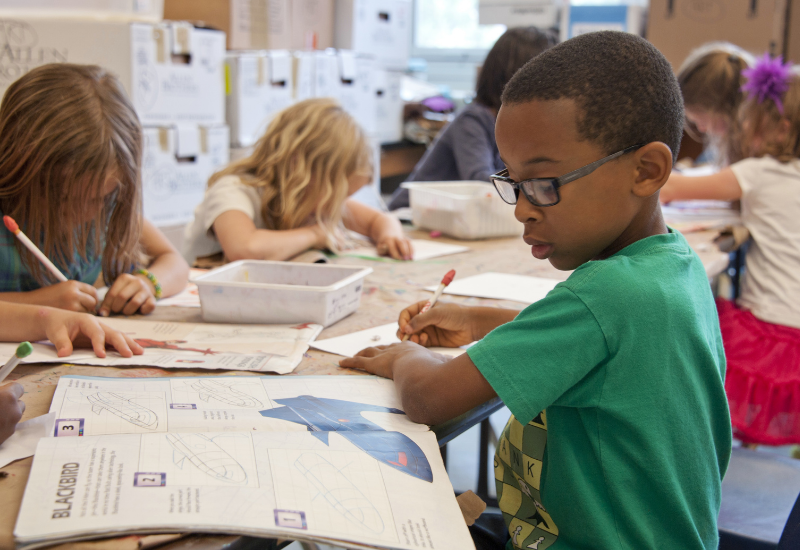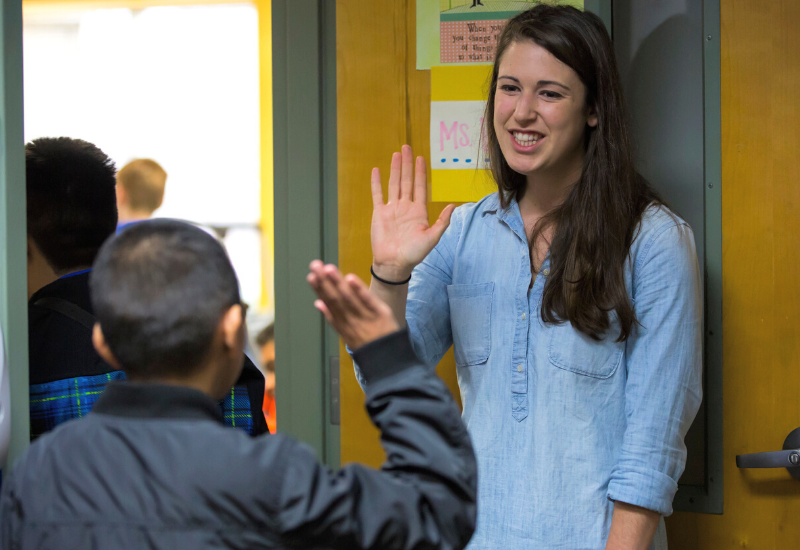Key Takeaways
To address unfinished learning, educators need to implement strategies that accelerate individual learners’ growth and progress, adapt to their differences, and build on their academic, social, and physical strengths. As a result, schools and systems need to promote strategies that encourage educators to:
Recognize every learner as an individual and offer targeted, relevant instruction based on that understanding.
Motivate and deepen learning by actively engaging every learner through authentic work, choice, and voice.
Create social connections by leveraging peers, families, and the community to help learners persevere and succeed.
Orient towards growth to accelerate individual and group mastery based on common expectations.

What is the problem?
Educators access and manage copious amounts of student data, all of which can be powerful for tailoring learning and personalizing instruction in the service of more equitable outcomes. However, they often go through lengthy data cycles, encountering numerous challenges along the way, and consequently losing time to actually plan instruction.
Schools and districts should ensure that teachers have time to not only review data, but also create meaningful and actionable instructional plans. Teachers’ ability to use data effectively and efficiently in classrooms is key to addressing unfinished learning and personalizing instruction that is equitable, engaging, and sustainable.
Why is it important?
Learners are more than their performance on assessments, so schools and systems should ensure that teachers have time to create opportunities that promote belongingness, positive relationships, and meaningful learning experiences. When teachers have the opportunity to build curriculum, identify instructional strategies, and design assessments, they can better understand what learners know, clarify what content still needs to be mastered, identify different needs, and determine who might benefit from additional academic or non-academic support. Most importantly, when teachers are afforded time to develop their instructional strategies, they will be more apt to impact students by increasing their engagement, achievement, and ability to be lifelong learners.
The research says...
Understanding every learner as an individual necessitates taking a whole-child approach. This requires simultaneously addressing both academic outcomes as well as learners’ social, emotional, and physical needs.
Instruction must be relevant to each learner to facilitate equitable learning experiences that meet each child’s specific needs and honor their culture, context, and identity.
All learners benefit from access to a high-quality curriculum that includes rich, challenging, and meaningful content and instructional materials that are actively engaging.
Learning does not occur in isolation. By actively creating social connections, schools can leverage peers, family, and the broader community to help learners succeed.
Taking a growth-oriented approach addresses unfinished learning because it helps educators assess their core curriculum while simultaneously implementing authentic experiences targeted to learners’ specific needs. It also provides opportunities for ongoing progress monitoring via diagnostic or formative assessments to proactively identify differences in learner progress, facilitate differentiated and individualized teaching, and adjust instruction to address learners’ needs.

How: Solution
Addressing unfinished learning through instructional strategies is necessary for students to thrive during times of disruption. Teachers can incorporate strategies that are relevant, engaging, focused on growth, and designed to deepen students’ conceptual understanding of the content.
Use Targeted, Relevant Instruction
Instruction must be relevant to each learner to facilitate equitable learning experiences that meet each child’s specific needs and honor their culture, context, and identity. To design equitable learning experiences, educators could use the following strategies:
Use personalized and universal learning strategies to provide multiple means of engagement, representation, and expression. For example, educators can facilitate opportunities for learner choice and voice to increase interest, effort, and self-regulation; allow learners to engage with content in different ways; acknowledge different motivations for learning; scaffold the learning experience to include multiple means of representing information; and provide multiple pathways for learners to demonstrate their understanding.
Ensure curriculum and teaching are culturally and linguistically relevant and identity-affirming to all learners. This approach encourages educators to consider academic achievement (learner growth), cultural competence (self and others), and socio-political consciousness (real-world connections). The pandemic presented an opportunity for schools to rethink how assessment, curriculum, pedagogy, technology, and community/family engagement can be more culturally relevant and thus more equitable for all learners.
Promote high expectations for growth and progress while still acknowledging and honoring students’ individual learning journeys. Schools need to use more than remediation and retention strategies to address unfinished learning as these can demoralize learners and cause the opposite effect. Rather, educators need to simultaneously expose learners to grade-level materials while providing personalized support through individual and small-group tutoring or instruction to scaffold learning.
Strategies/Resources:
Targeted and relevant instruction aligns students’ learning needs with their learning goals. The following are strategies that can be used in your classrooms.
Actively Engage Every Learner
All learners benefit from access to high-quality curriculum and instructional materials that are actively engaging. High-quality curriculum includes rich, challenging, and meaningful content in both digital and in-person learning environments. Rather than trying to “catch up” on missed curriculum, educators can instead focus on the instructional core and then determine the essential elements to cover. With targeted, high-quality curriculum and support, educators can expose learners to the content that is most relevant and engaging to them.
Authentic learning experiences further help learners by increasing motivation, which often leads to deeper understanding. To actively engage learners in authentic learning experiences, schools and districts can help educators to:
Develop creative inquiry-based and project-based learning opportunities that help learners actively engage with content and make meaningful connections.
Facilitate deeper learning (e.g., retrieval practice, transfer of knowledge).
Provide opportunities for learner choice and voice.
Provide opportunities for learner reflection and engagement throughout the learning process (e.g., metacognition).
Strategies/Resources:
Actively engaging learners will help students feel personally connected to their learning experience. The following strategies can be used to plan your own instructional strategies:
Additionally, you can explore TLA's profile on Lindsay High School to explore a school model that takes a performance-based approach to personalized learning.
Create Social Connections
Learning does not occur in isolation. By creating social connections, schools can leverage peers, family, and the broader community to help all learners succeed. Establishing strong educator-learner relationships can improve student outcomes and help accelerate learning. To do this, teachers can:
Establish positive and supportive relationships with learners to help them strive for success.
Implement a whole-child approach by understanding each individual learner globally – not just from an academic perspective.
Developing strong educator-family relationships can also help educators understand what families have witnessed during the COVID-19 crisis. Due to the proximity of learners to their families during quarantine, families witnessed more of the learning process than usual, allowing them to gain deeper insight and understanding into these learning experiences. Encouraging family involvement in their child’s education is vital to student success during times of unfinished learning and beyond.
Strategies/Resources:
Creating social connections with a student's peers, family, and broader community will allow you to show a commitment to more deeply understand and address students’ needs. The following strategies can be used to help you design more socially-connected classroom practices:
Additionally, you can explore this TLA Problem of Practice on ensuring student engagement with each other and with the content in hybrid and remote learning environments.
Take it further
Going forward, schools can leverage the momentum they gained with their families during the pandemic. Families serve as critical partners in helping students to grow, and they remain a critical lever for addressing unfinished learning.
The following strategies from the Education Endowment Foundation can support accelerating learning at home and facilitate working with parents:
Give families books and other at-home learning activities in conjunction with supplemental advice and resources to promote an ongoing, at-home culture for learning.
Support families in helping their children to establish routines, manage time and effort, set goals, and self-regulate.
Maintain positive, personalized, two-way communication channels to encourage involvement and ensure that families feel valued.
Provide evidence-based, structured programs for families with struggling learners or those who need additional support
Finally, community-based resources and connections – such as places of worship, community centers, and local businesses – serve as another critical lever to address unfinished learning. Students may not only need access to supplemental academic support (e.g., digital resources, internship-based learning, summer school, tutoring) but also relationships with caring, supportive adults in their day-to-day surroundings.
Recommended strategies include:
Building connections with local businesses and community members to provide enhanced learning opportunities for students and their families (e.g., inviting local professionals to join a class, utilizing museum resources).
Ensuring students have access to in-school and out-of-school support networks that cultivate strong relationships with caring and connected adults.
Facilitating internship-based learning to develop students’ professional networks and provide meaningful, real-world learning experiences.
Fostering strong relationships with other adults in the school building (e.g., bus drivers, cafeteria workers, cleaning staff, nurses) to give learners more social-emotional support.

Additional Resources and Content:
Distinctive Schools’ Personalized Learning Continuum: A rubric developed by Distinctive Schools to help educators measure progress along various components of their personalized learning continuum.
Chicago Public Schools’ Sullivan School Blueprint: An implementation plan for achieving a personalized learning model.
Natick Public Schools’ Experiential and Deeper Learning Drivers: A guide exploring seven instructional core values for deeper learning and five drivers of experiential learning.
Virtual Learning: How Can I Engage Families Remotely to Connect, Collaborate, and Support Them as Partners for Students?: A resource providing ways to connect with families as learning partners.
Next, explore how schools and districts can facilitate the right conditions for addressing unfinished learning by organizing their current systems around learner-centered principles and implement evidence-based strategies to meet students’ needs.